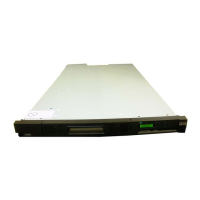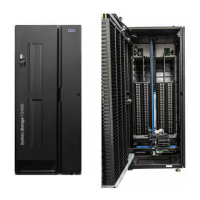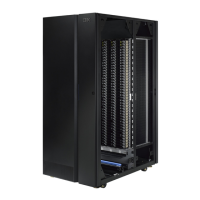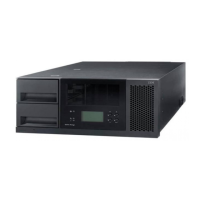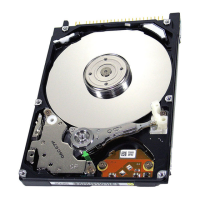Table 3. Failover and failback implementation (continued)
Step Operation
Manage-
ment
required
to
Format of
source
volume and
target
volume
Format of
source and
target volume
pair Result: Site A Result: Site B
Disaster at Site
A
Failover Site B Volume B,
Volume A
Volume B1 :
Volume A1
Volume A1 ->
Volume B1
(Suspended) The
volume pair might
display as full or
pending duplex
state if host write
operations have
stopped.
Volume B1 ->
Volume A1
(Suspended)
2 (Site A volumes must be in suspended state)
Return
production to
Site A
Failback Site A Volume A,
Volume B
Volume A1 :
Volume B1
Volume A1 ->
Volume B1
Volume A1 ->
Volume B1
3a (Site B volumes should be in a suspended state)
Return to
production (Site
B)
Note: If Site A
is still not
operational;
production can
continue at Site
B.
Failback Site B Volume B,
Volume A
Volume B1 :
Volume A1
Volume B1 ->
Volume A1
Volume B1 ->
Volume A1
3b (prepare to
return to
production (Site
A) from
production (Site
B)
Failover Site A Volume A,
Volume B
Volume A1:
Volume B1
Volume A1 ->
Volume B1
Volume B1 ->
Volume A1
(Suspended
state; the volume
pair might display
full or pending
state if host write
operations have
stopped.)
3c (Site A volumes should be in a suspended state)
Return to
production -
Site A
Failback Site A Volume A,
Volume B
Volume A1:
Volume B1
Volume A1 ->
Volume B1
Volume A1 ->
Volume B1
Returning production to local site after planned outages
After restoring operations at Site B, you can schedule a failback operation to
synchronize data and to enable production to resume at your original site, Site A.
Before you run a failback operation, you must create paths from Site B to Site A
between the specific LSSs.
For this scenario, assume that Site A is operational and that connectivity from Site
B to Site A is available. Use this procedure to restart your production environment
Chapter 10. Disaster recovery using Copy Services 143
|
||
|
|
|
|
|
|
|
|
|
|
|
|
|||
|
|
|||
|
|
|
|
|
|
|
|
|
|
|
|
|
|
|
|
|
|
|
|||
|
|
|
|
|
|
|
|
|
|
|
|
|
|
|
|
|
|||
|
|
|
|
|
|
|
|
|
|
|
|
|
|||
|
|
|
|
|
|
|
|
|
|
|
|
|
|
|
|
|
|
|||
|
|
|
|
|
|
|
|
|
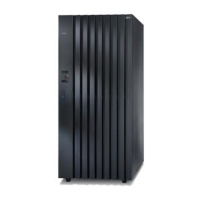
